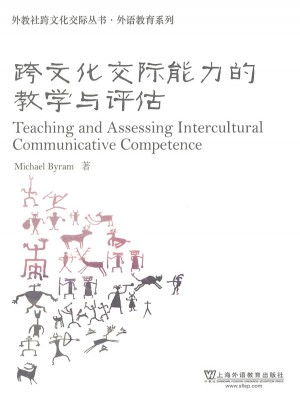

Life in the contemporary world brings almost everybody into contact with people of other languages and cultures. Foreign and second language teaching has evolved to meet the challenges of the twenty-first century by putting a new emphasis on learning for communication, or communicative competence. This book argues that a further evolution is required, to take account of the affective and cognitive effects of engaging with otherness, of encountering people of different cultural identities and social values and behaviours. In other words, language learners need to acquire intercultural competence too. Linguistic competence and intercultural competence are two dimen-sions of intercultural communicative competence.
The main purpose of the book is to define in precise detail what intercultural competence involves. what new role foreign and second language teaching has in learners acquisition of that competence. and how their proficiency can be assessed. It suggests a detailed approach to the development of syllabuses and curricula. It defines appro-priate modes of assessment of intercultural competence, whether acquired inside orbeyond the language classroom. Life in the contemporary world brings almost everybody into contact with people of other languages and cultures. Foreign and second language teaching has evolved to meet the challenges of the twenty-first century by putting a new emphasis on learning for communication, or communicative competence. This book argues that a further evolution is required, to take account of the affective and cognitive effects of engaging with otherness, of encountering people of different cultural identities and social values and behaviours. In other words, language learners need to acquire intercultural competence too. Linguistic competence and intercultural competence are two dimen-sions of intercultural communicative competence.
The main purpose of the book is to define in precise detail what intercultural competence involves. what new role foreign and second language teaching has in learners acquisition of that competence. and how their proficiency can be assessed. It suggests a detailed approach to the development of syllabuses and curricula. It defines appro-priate modes of assessment of intercultural competence, whether acquired inside orbeyond the language classroom.
The book carries forward earlier work on the aims and methods of cultural studies in foreign and second language education. It is written for teachers and those involved in curriculum development and assessment. It discusses issues which are relevant for language teachers in whatever context they work and provides a framework for development for specific contexts and contents of language classrooms of many kinds.
拜拉姆(Michael Byram),Professor of Education at the University of Durham, has been involved in teaching foreign languages in Britain and other countries for more than twenty years. He is interested in the relationship of language learning and cultural learning in foreign language courses. and has published several books on the subject including Investigating Cultural Studies in Fore.ign Language Teaching (Multilingual Matters, 1991) and Teaching and Learning Language and Culture (Multilingual Matters. 1994).
Contents
Preface
Introduction
The Tourist and the Sojoumer
Teaching and Assessment
InterculturaICommunicativeCompetence
Teaching and Assessing Intercultural Communicative Competence: A Framework
1 Defining and Describing Intercultural Communicative Competence Introduction
Communicating Across Linguistic and Cultural Boundaries
Communication and Interaction
Teaching Intercultural Communication in Context
Assessment in Context of Intercultural Communicative Competence
2 AModelforlnterculturaICommunicative Competence
Introduction
Describing Intercultural Communication and the InterculturaISpeaker
Attitudes
Knowledge
Skills
Intercultural Communication in Operation
Acquiring Intercultural Communicative Competence in anEducationaISetting
Relating InterculturalCompetence to Communication
InterculturaICompetence Defined in Terms of Objectives
TheDevelopmentalFactor
3 Objectives for Teaching. Leaming and Assessmertt
Introduction
Formulating Teaching, Leaming and Assessment Objectives
Acquiring Intercultural Competence
A Comprehensive Model of Intercultural
Communicative Competence
4 Curriculumlssues
Introduction
Concepts of Progression
A Threshold of Intercultural Communicative Competence?
Planning a Curriculum for Intercultural Communicative Competence.
An Example: Teaching French in an East Coast Region oftheUSA
5 Assessment
Introduction
Assessing the Five savoirs
Purposes forAssessment
Assessing Levels of Intercultural Communicative
Competence
Conclusion
Conclusion
Intercultural Communicative Competence and lingua franca Foreign Language Leaming
References
刚拿到还没看,印刷很好,内容应该不错吧。
看上去不错,可以考虑购买
下次还来买
书不错,推荐阅读。
掌柜发货很及时阿,谢谢啦!
不是很好 没能看下去
发货快 服务好 正品 好好好好好好好
挺好,一口气翻完了
评价教学有帮助
好好好好好
专业书,希望能达到预期